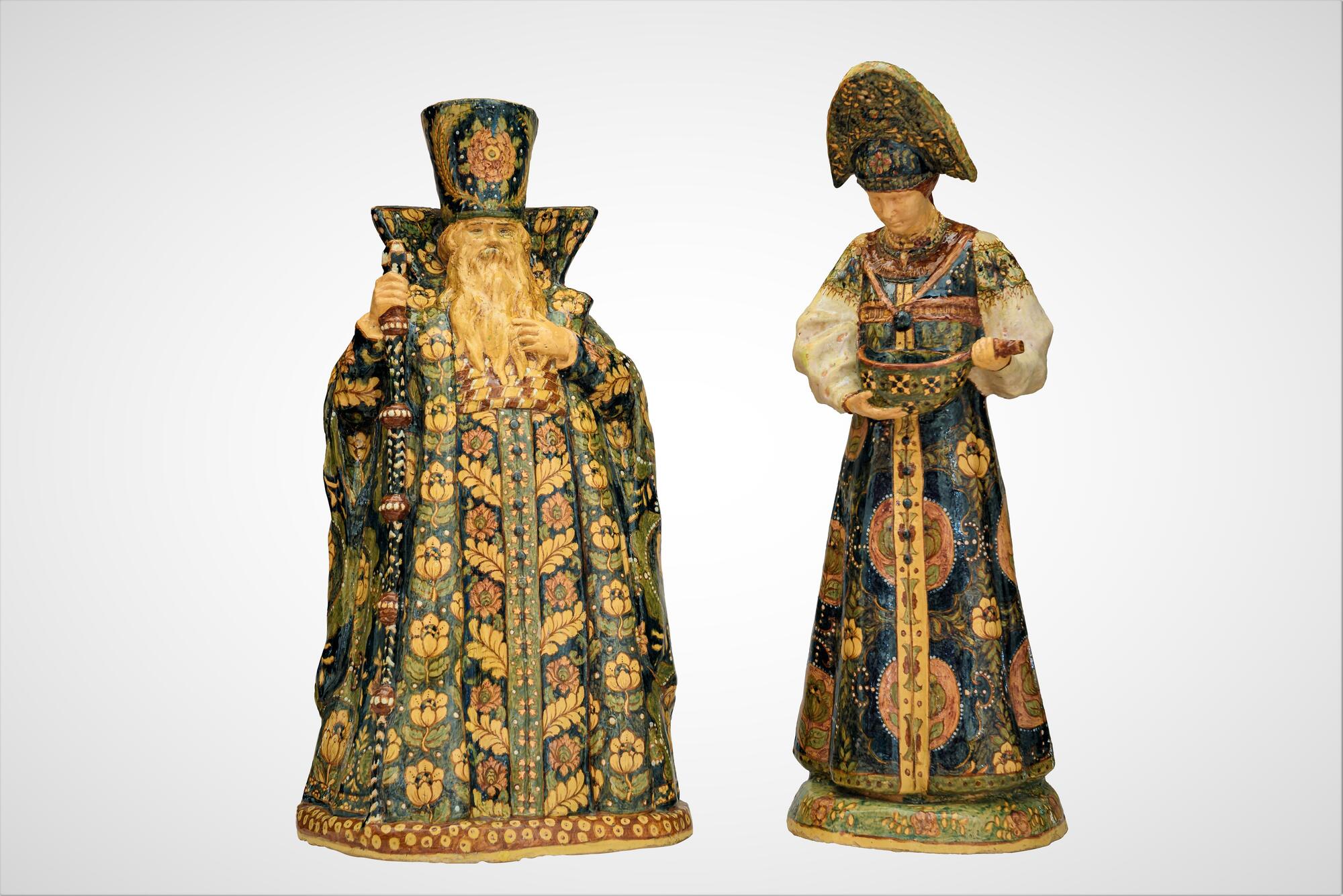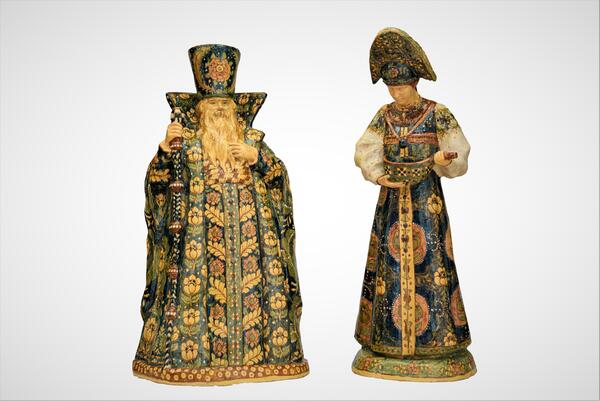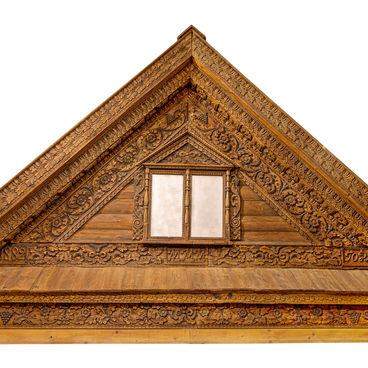The sculptures “Boyar” and “Boyaryshnya” (Boyar’s unmarried daughter) from the collection of the Sergiev Posad Museum-Reserve are rare examples of the author’s works by Konstantin Trofimov. The sculptor created them presumably in 1916.
Konstantin Trofimov was born in 1885 in a large family of a merchant from Tarsk. He graduated from the Tyumen Alexandrovsky Real School and in 1905 entered the first class of the Imperial Stroganov Central Art and Industrial School. In 1908, he was enrolled in a ceramic workshop. Three years later, he graduated from college with the title of an artist in applied art, then served as a full-time teacher of graphic arts at Sunday drawing classes.
In 1923, Trofimov left for Tyumen, where he collaborated with the provincial newspaper “Trudovoi nabat”, painted stage settings for performances of the Chamber Theater, taught drawing, participated in exhibitions. His own art studio worked in the city. The students studied in a two-story red brick building located on the corner of Republic and Voynovskaya Streets (now the Institute of Culture). In 1925 Trofimov moved to Omsk, where he taught drawing and composition at the Siberian Art and Industrial College named after M. Vrubel.
To this date, only a few ceramic works by Konstantin Trofimov are known, including “Boyar” and “Boyaryshnya”. The figures from the museum exhibition are full-length. Both figures are “dressed” in stylized rich clothes of the Russian nobility of the 15th — 17th centuries. The boyar is wearing a caftan and a high hat resembling a gorlatnaya hat. This was the name of a cylindrical headdress with a velvet or brocade top. Such hats were sewn from fur on the necks of fur-bearing animals, hence the name.
Boyaryshnya is wearing a women’s festive costume: a shirt with bouffant sleeves gathered in a little, a sarafan and a kokoshnik. The faces of both figures are not painted and stand out with fine, elaborate modeling. The bright decorative painting imitating old patterned fabrics is made with colored clays.
Both figures entered the museum as part of a private collection of Anatoly Alexandrov. He moved to Sergiev Posad in 1910, and was known in the city as an avid collector. After Alexandrov’s death in 1930, his widow transferred most of his collection to the Zagorsky (now Sergiev Posad) Museum-Reserve.
Konstantin Trofimov was born in 1885 in a large family of a merchant from Tarsk. He graduated from the Tyumen Alexandrovsky Real School and in 1905 entered the first class of the Imperial Stroganov Central Art and Industrial School. In 1908, he was enrolled in a ceramic workshop. Three years later, he graduated from college with the title of an artist in applied art, then served as a full-time teacher of graphic arts at Sunday drawing classes.
In 1923, Trofimov left for Tyumen, where he collaborated with the provincial newspaper “Trudovoi nabat”, painted stage settings for performances of the Chamber Theater, taught drawing, participated in exhibitions. His own art studio worked in the city. The students studied in a two-story red brick building located on the corner of Republic and Voynovskaya Streets (now the Institute of Culture). In 1925 Trofimov moved to Omsk, where he taught drawing and composition at the Siberian Art and Industrial College named after M. Vrubel.
To this date, only a few ceramic works by Konstantin Trofimov are known, including “Boyar” and “Boyaryshnya”. The figures from the museum exhibition are full-length. Both figures are “dressed” in stylized rich clothes of the Russian nobility of the 15th — 17th centuries. The boyar is wearing a caftan and a high hat resembling a gorlatnaya hat. This was the name of a cylindrical headdress with a velvet or brocade top. Such hats were sewn from fur on the necks of fur-bearing animals, hence the name.
Boyaryshnya is wearing a women’s festive costume: a shirt with bouffant sleeves gathered in a little, a sarafan and a kokoshnik. The faces of both figures are not painted and stand out with fine, elaborate modeling. The bright decorative painting imitating old patterned fabrics is made with colored clays.
Both figures entered the museum as part of a private collection of Anatoly Alexandrov. He moved to Sergiev Posad in 1910, and was known in the city as an avid collector. After Alexandrov’s death in 1930, his widow transferred most of his collection to the Zagorsky (now Sergiev Posad) Museum-Reserve.



